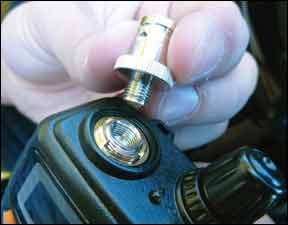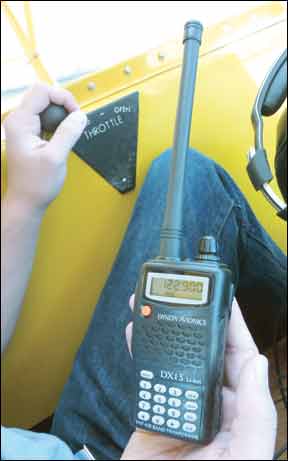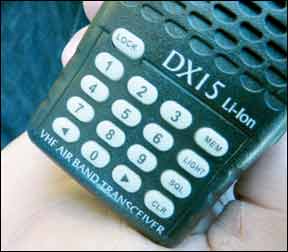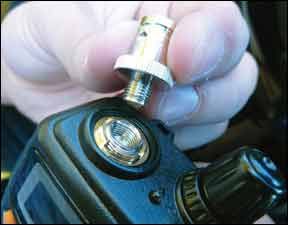Its more or less a given that carrying a handheld VHF transceiver in the airplane is a good idea, for ground frequency monitoring, pre-start clearance getting and as a back-up comm. The market hardly lacks for choice and now it has one more to pick from. At Sun n Fun, Dynon Avionics announced the DX15 VHF air band transceiver to compete with Icom, Vertex and Sportys at a price point of $156 that we think is competitive with other radios. The DX15 itself is a compact and credible product, in our view. Its the smallest, lightest VHF portable weve tried, but that size comes with compromise. It doesnt have some of the higher end features that the Sportys SP-400 or Icom products do, such as built-in VOR or localizer/CDI capability. On the other hand, who cares? Most of us use portable radios as comm radios and depend on portable GPS for backup nav, so no dings from us against the DX15 for lack of ancillary features. You get what you pay for. Another limitation of the DX15s compact size is its battery pack. The only option is a dedicated lithium ion battery pack, the rechargeable chemistry of choice these days. While Li-Ion chemistry delivers good power with a graceful discharge rate, its also slower to charge than other types of batteries and has self-discharge at an unknown rate. For this reason, Dynon recommends that for storage, the battery be removed and stored separately. This complicates its use as a back-up comm a bit-just more parts and pieces to keep track of. Also, the battery needs to be in a plastic bag or a container that otherwise protects its exposed terminals against shorting. (A piece of tape would work with this pack.) Like other handhelds, the DX15 can be used with an external antenna through 50-ohm coax, but there’s a twist: The antenna jack is a threaded SMA-type, so you need an SMA-to-BNC adapter. No big deal, but thats another bit to carry along and one thats just begging to be dropped behind the rudder pedals. Performance wise, the DX15 is comparable to Sportys SP-400 and the Icom products. We tried it in our LSA Cub, with both an external antenna and the standard rubber duck. Audio quality and RF punch seemed to be about the same as the Sportys and Icom products. All have 1.5 watt nominal transmit power, but our impression was that the SP-400 did a little better than the DX15 when both were used with just the rubber duck antenna from inside the airplane. From the ground, the two sounded about the same when the Cubs external antenna was used. According to the specifications, both the SP-400 and DX15 have -6dB receiver sensitivity, but we thought the SP-400 clearly outperformed the DX15 in receiving distant, weak signals. On the ground, seven miles from a neighboring airport, breaking the squelch on the SP-400 brought in a readable, if noisy ASOS broadcast while on the DX15, we could make out faint modulation, but nothing readable. The DX15 has good basic features such as band scanning, multiple storage of frequently used frequencies, good backlighting and-something unique-a dedicated key to tune 121.5 MHz. So given its credible performance, how does the DX15 stack up against its competition value wise? Very well, in our view. When it rolled out the product at Sun n Fun, Dynon rather uniquely offered buyers the opportunity to bid on it auction- style, with the first 100 bidders being awarded the radios for the lowest bid among the 100. (It made only 100 radios initially, but will keep the product in its line, were told.) Dynon said comparable radios sell for about $250, but the auction price settled at a realistic $156. In our view, given the competition, thats just about right and its interesting that the market pegged it. The Icom IC-A14, for instance, sells for as low as $199 to $215 and has VOR and comm capability, plus an alkaline battery pack option that we think is a must for back-up duty. On the other hand, the Icom isn’t as compact as the DX15. So if small size and simplified operation are drivers, the DX15 is a worthy choice. Otherwise its a credible if not exceptional portable radio. 




